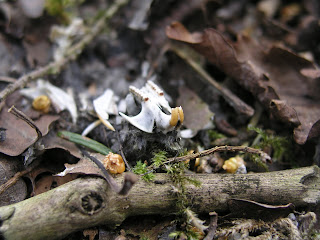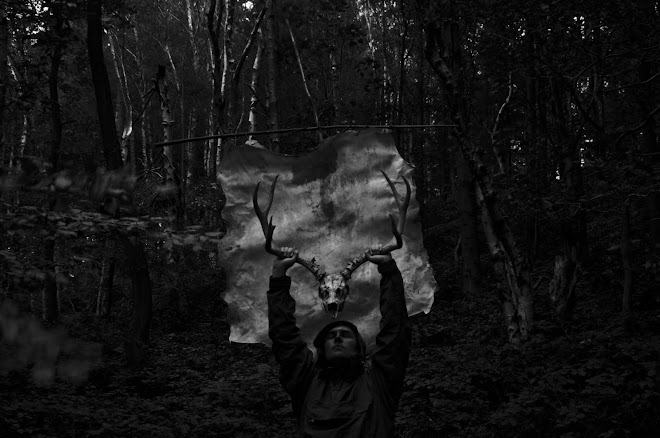skip to main |
skip to sidebar
The Bird Of Night III




An object of equal beauty to the Bra cauldron owl fitting is a jade mask carved by the people of the neolithic Hongshan culture of north eastern China, dated from approximately 4700 to 2900 BC. Hongshan jades includes many zoomorphic pieces with pigs, dragons, pig-dragon hybrids, cicades and birds being among the most common. Carved without the aid of the metal tools it is thought that Hongshan jade workers cut the rock using saws of animal sinew primed with sand and grit, drilled holes using pump drills with hard stone bits and polished the jade on river sands and silts.
The mask shows a sweeping, graceful symetry and striking, naturalistic propertions that speak of an artist intimately aware of the form and character of the animal. The jade itself is a deep green flecked with golden bands. Two small holes have been drilled into the piece at the top suggesting its use as mask in some form of ceremonial.
[ Those interested in the exquisite jades from the Hongshan culture are pointed in the direction of the excellent book “From Pig to Dragon and to the Collector - Appraising Neolithic Hongshan Jades” by Mr. Xu Qiang. (ISBN 978-7-80142-865-3/Z.436-08.2007 Hua Yi Publishing House, PRC) In his book Xu also makes reference to the apparent paradox of less than 300 Hongshan jades in official collections yet many more held by him and other private collectors. He explains that, in view of the number of Hongshan grave sites and the average number of jades found therein when tombs were still in pristine conditions, a much larger number of authentic Neolithic Hongshan jades are not impossible. Mr Xu’s explanations are translated into English, alas English of a risibly poor quality which does not always allow the reader to fully grasp the fine details which are probably revealed in the Chinese sections of the text. ]
Such a delicate and expressive object as the Hongshan owl mask is at odds with the inauspiscious character that Chinese folklore assigns to the bird. Traditionally the Chinese do not like the sound or hooting that the owl makes because in Chinese phonetic meaning it gives the expression for digging of a grave. One of the ancient Chinese beliefs was that when a person is about to die one would hear the Owl hoot calling out `dig and dig'.
The Mandarin word for owl uses the same character as “killing a person and placing his head on a pole” and another Chinese name for owl, "xiao", is used in expressions relating to ferocity and bravery. It was also believed that when the young of an owl was about to fledge the next it would dig out its mother's eyes or even eat their own mothers. Erroneous as this belief is owls are known to be violently territorial and to defend their nests against intruders, as the wildlife photographer Eric Hosking found out when he got too close to a tawny owl and paid with the loss of his eye.
As I sat amongst the bones of mice and looked out from the yew-burrowed rocks into the woodland below I wondered where the owl was that had left such ossuarys amongs the leaves. Tawny owls (Strixa aluco Sylvatica – “sylvatica” meaning woodland and denoting the subspecies found in Western Europe and the British Isles) usually roost on branches close to trunks, hidden from sight by both by their excellent camouflage and peoples aversion to sitting still and looking up. Of the countless times I have heard owl call I have seen them on the wing only a handful – and then only briefly as they flash past in the darkness, sometimes illuminated as the pass through clearings or trails.
Tawny Owls pair off from the age of one year and stay together in a usually monogamous relationship for life. An established pair's territory is defended year-round and maintained with little, if any, boundary change from year to year. This site may have been used to regorge pellets for generations. Owls may have sat on the yews that bristle on the crag since before people crossed the landbridge from continental Europe, their pellets decomposing to reveal the bleached bones of their kills, their cries a prescience of death to creatures that walk on two legs and on four.






No comments:
Post a Comment